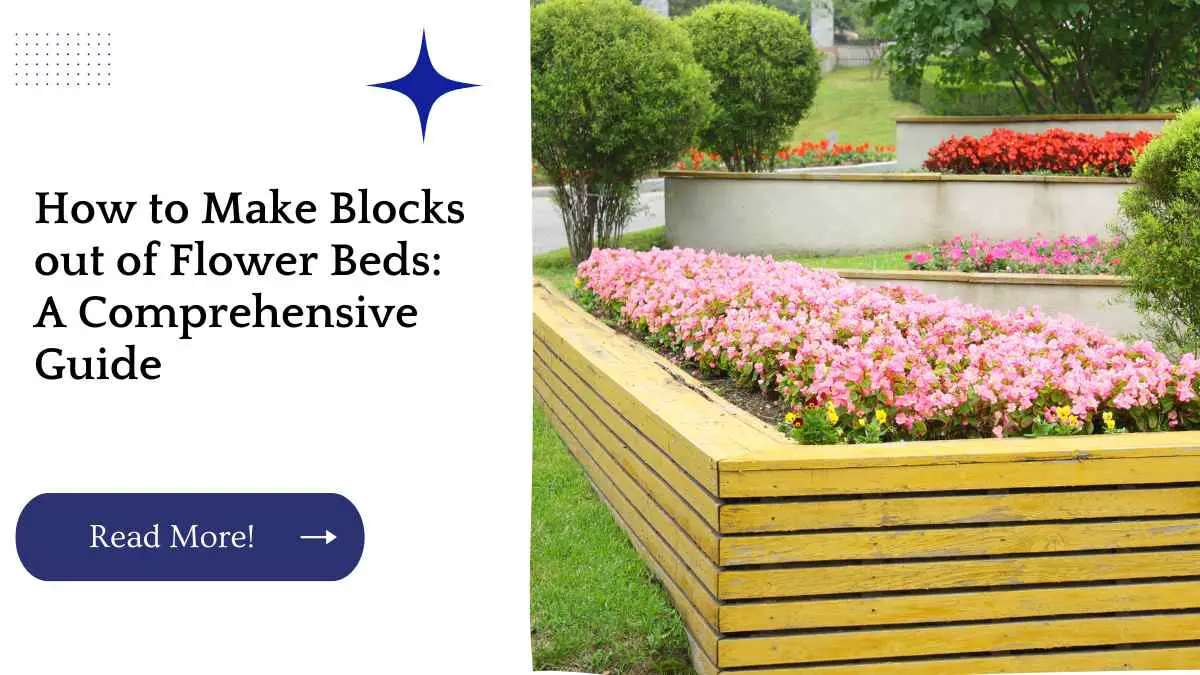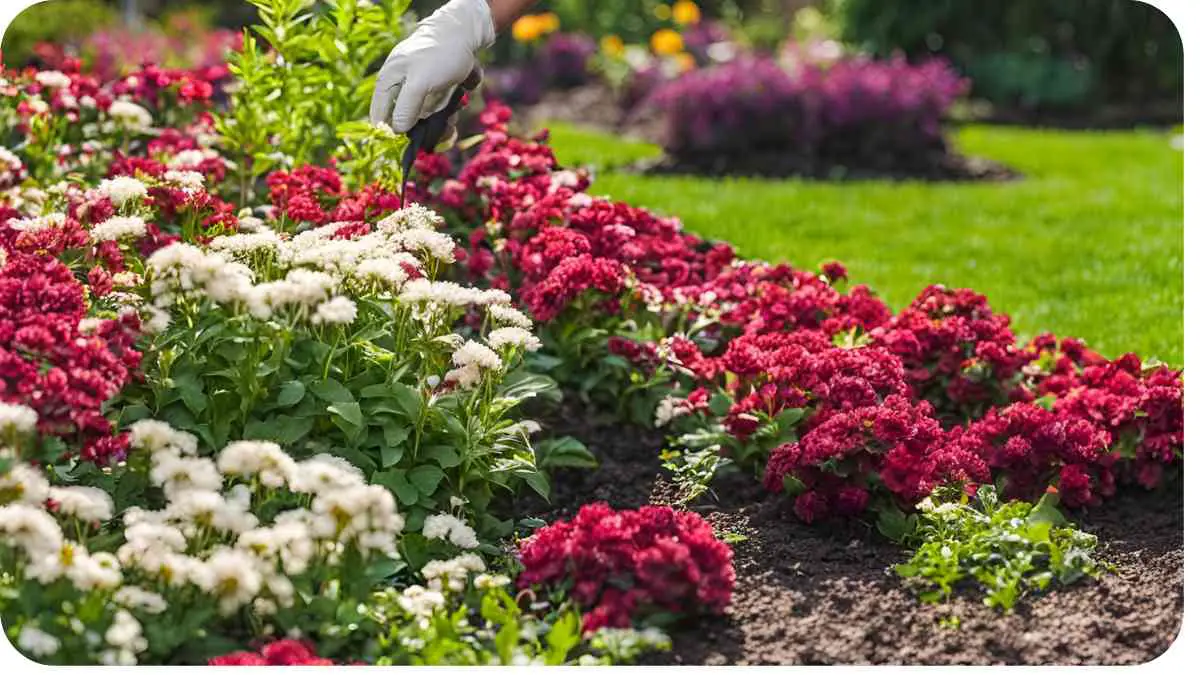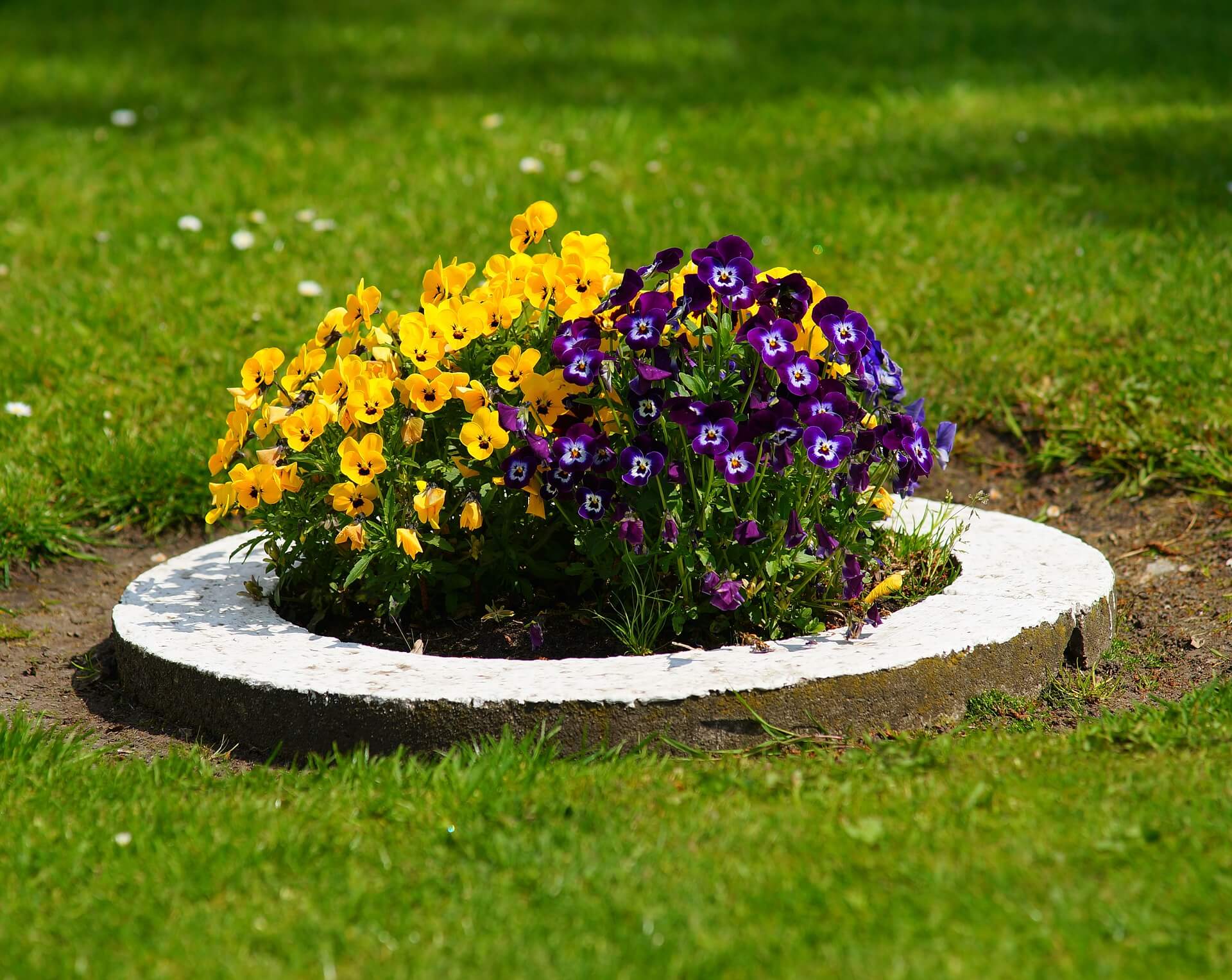The Art and Science of the Flower Bed: A Comprehensive Guide

Flower beds are more than just collections of pretty blossoms; they are carefully curated ecosystems, miniature works of art that bring beauty, biodiversity, and a sense of tranquility to any space. Whether you’re a seasoned gardener or a budding enthusiast, understanding the principles behind a successful flower bed can transform your outdoor area into a vibrant and flourishing haven. This comprehensive guide will delve into the various aspects of creating and maintaining a stunning flower bed, from planning and preparation to plant selection and ongoing care.
I. Planning and Design: Laying the Foundation for Success
The success of any flower bed hinges on thoughtful planning. Before you even think about picking out plants, consider the following:
Site Assessment: The most crucial step is understanding your site’s conditions.
- Sunlight: How many hours of direct sunlight does the area receive? This will dictate the types of plants that will thrive. Full sun (6+ hours), partial shade (3-6 hours), and full shade (less than 3 hours) each cater to different plant needs.
- Soil Type: Is your soil sandy, clayey, loamy, or a combination? Understanding your soil composition is vital for choosing plants that will adapt and thrive. Soil testing kits are readily available and can provide valuable insights into pH levels and nutrient deficiencies.
- Drainage: Does water drain quickly, slowly, or not at all? Poor drainage can lead to root rot, while excessively fast drainage can leave plants parched.
- Microclimate: Consider the surrounding environment. Are there buildings, trees, or fences that create shade, wind tunnels, or pockets of warmth?

Design Considerations: Once you understand your site, you can start designing the flower bed.

- Purpose: What is the primary goal of the flower bed? Is it to attract pollinators, create a focal point, provide privacy, or simply add color and beauty?
- Style: Consider the overall style of your garden and home. Do you prefer a formal, symmetrical design, a cottage garden with a relaxed and informal feel, or a modern, minimalist aesthetic?
- Shape and Size: The shape and size of the flower bed should complement the surrounding landscape. Consider the proportions of your yard and the placement of existing features.
- Color Palette: Choose a color scheme that appeals to you and complements the surrounding environment. Monochromatic schemes (using different shades of the same color) can be elegant and sophisticated, while complementary color schemes (using colors opposite each other on the color wheel) can be vibrant and eye-catching.
- Texture and Form: Don’t just focus on color; consider the texture and form of the plants. Mix plants with different leaf shapes, sizes, and textures to create visual interest. Varying plant heights will also add depth and dimension to the flower bed.
- Bloom Time: Plan for succession planting, selecting plants that bloom at different times throughout the growing season to ensure continuous color and interest.
- Hardiness Zones: Ensure that the plants you choose are hardy in your region’s climate. Hardiness zones are based on average minimum winter temperatures and indicate which plants are likely to survive the winter in a particular area.

Sketching and Planning: Before you start digging, create a rough sketch of your flower bed design. This will help you visualize the layout and ensure that you have enough space for all the plants. Consider using graph paper to create a more detailed plan.
II. Soil Preparation: Nourishing the Roots
Healthy soil is the foundation of a thriving flower bed. Proper soil preparation is essential for providing plants with the nutrients, drainage, and aeration they need to flourish.
- Clearing the Area: Remove any existing grass, weeds, rocks, and debris from the area where you plan to create the flower bed.
- Soil Testing: If you haven’t already done so, test your soil to determine its pH level and nutrient content. This will help you determine what amendments are needed to improve the soil.
- Amending the Soil: Amend the soil with organic matter, such as compost, aged manure, or peat moss. Organic matter improves soil structure, drainage, and nutrient retention. Work the amendments into the soil to a depth of at least 12 inches.
- Improving Drainage: If your soil is poorly drained, consider adding sand or gravel to improve drainage. You can also create raised beds to elevate the planting area and improve drainage.
- Adjusting pH: If your soil pH is too acidic or alkaline, you can adjust it with amendments. Lime can be added to raise the pH of acidic soil, while sulfur can be added to lower the pH of alkaline soil.
III. Plant Selection: Choosing the Right Plants for Your Garden
Choosing the right plants is crucial for creating a beautiful and successful flower bed. Consider the following factors when selecting plants:
- Sunlight Requirements: Match the plant’s sunlight requirements to the amount of sunlight the flower bed receives.
- Soil Preferences: Choose plants that thrive in your soil type and pH level.
- Water Requirements: Group plants with similar water requirements together to make watering easier.
- Mature Size: Consider the mature size of the plants when planning the layout. Avoid overcrowding plants, as this can lead to disease and reduced flowering.
- Bloom Time: Select plants that bloom at different times throughout the growing season to ensure continuous color and interest.
- Hardiness Zone: Choose plants that are hardy in your region’s climate.
- Pollinator Attraction: Consider planting flowers that attract pollinators, such as bees, butterflies, and hummingbirds.
- Deer Resistance: If deer are a problem in your area, choose deer-resistant plants.
- Plant Type: Select a variety of plant types to create visual interest. Annuals provide vibrant color throughout the growing season, while perennials provide long-term structure and return year after year. Bulbs offer a burst of color in the spring or fall.
IV. Planting and Arrangement: Bringing Your Design to Life
Once you have selected your plants and prepared the soil, it’s time to plant.
- Spacing: Follow the spacing recommendations on the plant labels to ensure that the plants have enough room to grow.
- Planting Depth: Plant the plants at the correct depth. The top of the root ball should be level with the surrounding soil.
- Watering: Water the plants thoroughly after planting.
- Mulching: Apply a layer of mulch around the plants to help retain moisture, suppress weeds, and regulate soil temperature. Organic mulches, such as shredded bark or wood chips, will also decompose over time and add nutrients to the soil.
- Arrangement: Arrange the plants according to your design. Consider the height, color, and texture of the plants when placing them in the flower bed. Plant taller plants in the back and shorter plants in the front. Group plants with similar colors and textures together to create a cohesive look.
V. Maintenance: Keeping Your Flower Bed Thriving
Maintaining a flower bed requires regular attention and care.
- Watering: Water the plants regularly, especially during dry periods. Water deeply and less frequently, rather than shallowly and often.
- Fertilizing: Fertilize the plants regularly with a balanced fertilizer. Follow the instructions on the fertilizer label.
- Weeding: Remove weeds regularly to prevent them from competing with the plants for nutrients and water.
- Deadheading: Deadhead spent flowers to encourage more blooms.
- Pruning: Prune plants as needed to maintain their shape and size.
- Pest and Disease Control: Monitor the plants for pests and diseases. Treat any problems promptly to prevent them from spreading.
- Mulch Replenishment: Replenish the mulch as needed to maintain a consistent layer.
- Fall Cleanup: In the fall, cut back perennials and remove any dead or diseased foliage. Apply a layer of mulch to protect the plants from winter weather.
VI. Advanced Techniques:
- Succession Planting: Stagger planting times to ensure a continuous bloom throughout the season.
- Companion Planting: Plant specific plants together to benefit each other, deter pests, or improve soil conditions.
- Vertical Gardening: Utilize trellises, walls, or hanging baskets to add vertical interest to your flower bed.
- Water Gardening: Incorporate a small pond or water feature to attract wildlife and add a tranquil element.
FAQ:
- What is the best time to plant a flower bed? The best time to plant a flower bed depends on your climate and the type of plants you are planting. Generally, spring or fall are good times to plant.
- How often should I water my flower bed? Water your flower bed regularly, especially during dry periods. The frequency of watering will depend on the type of plants, the soil type, and the weather conditions.
- What is the best type of fertilizer for a flower bed? A balanced fertilizer, such as 10-10-10, is a good choice for most flower beds. Follow the instructions on the fertilizer label.
- How do I get rid of weeds in my flower bed? Remove weeds regularly by hand or with a hoe. You can also use herbicides, but be careful not to damage the plants.
- How do I prevent pests and diseases in my flower bed? Monitor the plants regularly for pests and diseases. Treat any problems promptly to prevent them from spreading. Choose disease-resistant varieties whenever possible.
- What are some good plants for a shady flower bed? Some good plants for a shady flower bed include hostas, ferns, impatiens, and begonias.
- What are some good plants for a sunny flower bed? Some good plants for a sunny flower bed include roses, petunias, zinnias, and sunflowers.
- How do I attract pollinators to my flower bed? Plant flowers that attract pollinators, such as bees, butterflies, and hummingbirds. Some good choices include lavender, bee balm, salvia, and coneflowers.
Conclusion:
Creating and maintaining a beautiful flower bed is a rewarding endeavor that brings joy and beauty to your outdoor space. By carefully planning your design, preparing the soil, selecting the right plants, and providing regular care, you can transform your garden into a vibrant and flourishing oasis. Remember to be patient and persistent, and don’t be afraid to experiment. With a little effort and dedication, you can create a flower bed that will be the envy of your neighborhood. Happy gardening!



